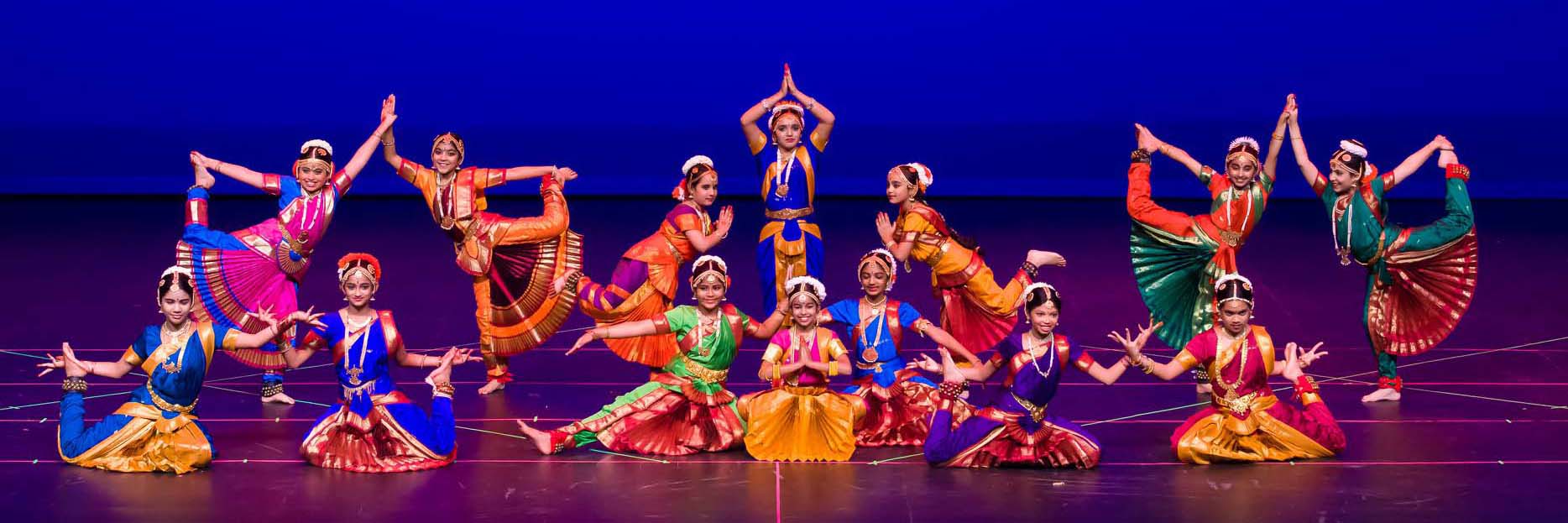Bharatanatyam

What is Bharatanatyam?
Bharatanatyam is an artform through which dramas, poetry, stories, issues, culture, and traditions are portrayed. Bharatanatyam originated over 2,000 years ago in Southern India. It is considered to be one of the most technically difficult art forms to master. The art form is named after the great sage Bharata Muni, an ancestor of the Pandavas and Kauravas from the Sanskrit epic of the Mahabharata. Bharata wrote the Natyashastra, which aims to lift the spectators onto the ultimate expression of reality and transcendent values through dance, music, and drama. It is said that Bharatanatyam is derived from the Natyashastra.
What is the hardest aspect of Bharatanatyam?
The hardest aspect of Bharatanatyam physically is Aramandi. Aramandi means half sitting, it is the aspect of the legs bent in a nearly perfect Rhombus formation, while simultaneously performing all of the hand and footwork patterns. Holding this formation requires extreme calf, glute, core, and hamstring strength. This formation of the feet must be held for long periods of time especially for higher level performances. The mastery of the Armandi requires strength, endurance, and great mental fortitude. It can take years for a dancer to master Aramandi.
The most difficult thing to master as a dancer mentally is Abhinaya. This involves using expressions in order to connect and convey meaning to the audience. A mastery in the Abhinaya is key in order to perform with meaning. It can take a student nearly a lifetime to perfectly master Abhinaya.
Why should you learn Bharatanatyam (Physical)?
Technique, Grace/Elegance, Stamina/Strength, Mental Toughness, Flexibility, Balance
What knowledge is required (Mentally)?
There are four key elements of knowledge that a dancer must learn. The knowledge of the art form, knowledge of physical training mechanisms, knowledge of music, and an understanding of the historical context.
What is the Kalakshetra style?
Kalakshetra is the style of Bharatanatyam founded by Padma Bhushan Rukmini Devi Arundale. After the British banned Bharatanatyam, the sanctity and purity of the art form was destroyed. Rukmini Devi returned the artform back to it’s lost glory, now known as the Kalakshetra style. The Kalakshetra style is derived from a combination of ballet fundamentals and the ancient style of Bharatanatyam.
What is the goal of a Bharatanatyam performance?
The goal of a Bharatanatyam performance is to explore the human complexities and ethical issues that people face through a story. A dancer attempts to reveal these human complexities and issues through the use of different movements, motions, expressions, rhythms, and footwork.
Where is Bharatanatyam taught?
Bharatanatyam has flourished through the Temples and courts throughout Southern India. The British Government attempted to ban the art form in 1910. Through the protests of the Indian community, the art form was able to overcome the prohibitions. Now, in modern times, Bharatanatyam has become an international phenomenon. The artform now contains mastery and traditional principles along with new modern techniques and styles. The impact of the artfrom affects society, culture and the world around us if successfully performed by a master.
What is Natyom’s style?
There are different banis in Bharatanatyam. Each bani / technique is specific to the guru parampara / lineage. The artform and mastery of the teacher is imprinted onto each student. This allows each person to imprint a part of themselves onto the artform through their personal style.